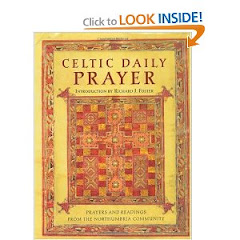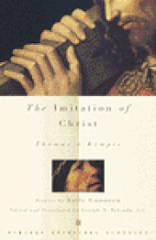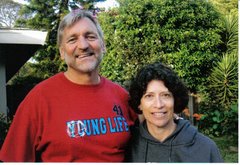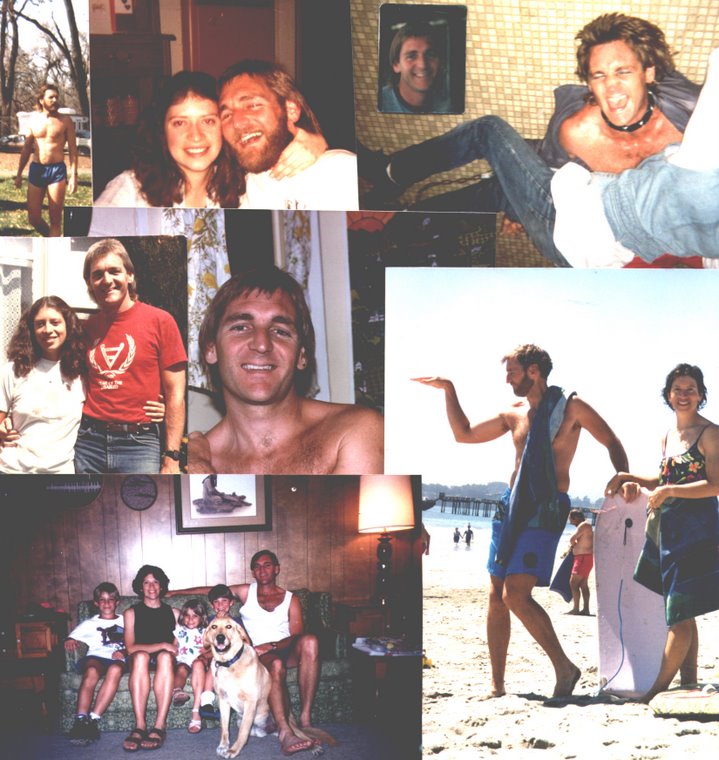From Clan to Tribe – The Story of a
Celtic Lakota Family
The Watters family, the name meaning “They that dwell by
loch and sea”, originally lived on the western islands and the highlands of
Scotland. Belonging to a sept (smaller
family group) of Clan Buchanan or possibly Forbes, the families were farmers
and fishermen under the protection and leadership the clan chief. It is likely but nearly impossible to prove
that the family was descended from the Dalriada kingdom of the 5th
century. Even now, the Watters are
predominantly found in areas that coincide with the original Gaelic kingdom
that was part of the Ulster region of Ireland and the Highlands and Isles of
Scotland. Being in the upper highlands
and islands afforded some security during the 18th and 19th
centuries, the land and climate being somewhat inhospitable and troublesome for
travelers. These people subsisted on a
diet largely of potatoes and whatever vegetables might grow in the rocky soil,
as well as whatever the sea would begrudgingly give up. Life was extremely simple and often just
plain “extreme.”
Faith had always been a mainstay of strength and community
for our family and others. The old
Celtic church established by monks, (Patrick, Columba and others), was critical
to the life being and morale of people who struggled to eke out a living in
this country. As time and seasons would
pass, this faith would play a continual role in the life of the family. Especially, as oppression and tyranny caused
the family to uproot themselves and journey to other lands and places.
The 18th century finally brought insecurity to
our family in the form of the notorious and often barbaric Highland
Clearances. Without going into detail in
this brief history, the Clearances were England’s answer to dealing with
troublesome clans, and also, to introduce sheep to the highlands to bolster
their woolen industry. Lowland clansmen
were even utilized by the government to drive out, burn out and brutally
displace the highland families and clans.
There are many general accounts of all this mayhem and where all the
surviving families fled to, but there are always exceptions to generalities
throughout history.
For the most part, the Watters family fled the highlands to
either the outer islands or across the sea to Ireland, settling on the north
shores in what is known as County Antrim. Also, many Watters were already in
Northern Ireland (Ulster) so this was not “hostile” territory for those from
Scotland. Many others emigrated to North
America and Oceana (Australia & New Zealand) at the same time. James Watters (this author’s great, great
grandfather) and Ann Lowery were wed there and started their family, continuing
in the pattern established by generations before them; farming and fishing. Dates and details of the Watters family are
very difficult, if not impossible, to find.
Ship’s manifests and the occasional recorded birth, death or marriage
document are often the only evidence of where and when the family turned up in
places.
It wasn’t long before another “clearance” of sorts would
cause the Watters to once again seek freedom and safety from oppression. The English weren’t satisfied with colonizing
just the highlands, but also earlier (17th century) wanted to
displace troublesome Gaelic peoples in favor of bringing industry and colonists
to the Ulster regions of Ireland. While
Scot/Irish Presbyterians were not necessarily persecuted as were Roman
Catholics during this time, it was clear that troubles (“Troubles”) were to
come from these occurrences. These
actions once again included military operations in what is now Northern
Ireland. Suffice to say, James Watters
did not want to stick around for the potential destruction and death that
seemed to be coming once again. Making
their way to a port, the family secured steerage on a ship bound for
Philadelphia in the hopes of connecting with other Celtic families that fled
earlier to America.
James and Ann settled in Alleghany County Pennsylvania after
a short stay in Philadelphia. Farming
was good and the family prospered.
During this time, my great grandfather, Samuel, was born. Again, there is not much in the way of detail
about our particular family in Pennsylvania, but other histories give a very
good indication of how life looked during this time in the history of the
United States. Samuel apparently thrived
in this new world environment, and developed an also apparent penchant for
exploration and adventure. He eventually
left Pennsylvania and traveled northwest to Minnesota, where he became employed
as a fur trapper for either the Hudson Bay or Northwest companies, again,
details are sketchy but those were the two major companies employing
trappers. French, Irish, and Scots made
up the bulk of the work force at that time.
Like many other trappers, Samuel “took up with” a Native American woman,
which was not only convenient for surviving in the land, but also brought
valuable connections with the native population in terms of business
propositions. Eventually, Samuel and
Isabel Marshall (her English name) were wed and started their own family. At this time, (early 1800’s,) the Lakota
people were happily entrenched as a woodland people, enjoying hunting, fishing
and gathering, while also engaging in the occasional skirmish with the neighboring
Ojibwe tribe.
It wouldn’t be long, however, before yet another sort of
“clearance” would threaten the Watters family.
Now, a little cultural history on Lakota family is probably necessary
here? The Lakota people had a somewhat
matriarchal society, not so much that women were in charge, but that whenever a
man married, he became part of the wife’s tribe/family. Tribes usually consisted of several family
groups led by a chief, hence the “clan to tribe” transition of my family. During this time, settlers were pushing
westward seeking their own “manifest destiny”.
And, often the settlers were accompanied by government military forces
who would establish forts in the frontier.
The forts provided protection and a sort of town where people could gather,
obtain goods and services, and in general maintain a sense of community. Needless to say, the native population was
often a hindrance to this new colonization westward. All sorts of “arrangements” and coalitions
were established between various people groups; unfortunately for the Lakota
these coalitions didn’t include them.
Eventually, the Lakota people sought another place to live in peace, and
this saw them leave Minnesota traveling southwest into the Dakota territories. Samuel and his family were part of this
migration, at least what little evidence that exists seems to lend credence to
that movement? (Later evidence such as
death certificates and gravestones would provide further hints to the movement
of the family.)
During the time of life on the Great Plains, the Lakota
nation thrived. The new lifestyle of
hunting and moving with the great Buffalo herds seemed to suit them well. Horses added another advantage to the growing
nation of tribes, and the often glamorized life of the Indians began to be
developed among white America. Sadly,
the “good days” of the Buffalo and plains life would also be short-lived for
the Lakota and our Watters family.
Further westward movement of settlers and forts (cavalry) continued to
desecrate both the land and the indigenous people; disease, massacre of the
North American Bison (Buffalo), and environmental damage (yes, believe it or
not it had already started,) among other things. The government felt compelled to intervene on
behalf of settlers and deal with the “Indian uprisings”. Again, I won’t belabor that history here, but
suffice to say our family was once again feeling the need to move.
Establishment of reservations (areas of isolation for the
various tribes) by the government heralded a clear signal to Lakota leaders
that something must be done. Several
skirmishes among cavalry and Indians alarmed Washington and prompted further
escalating military intervention.
Notable among these campaigns was Custer’s debacle at the Little Bighorn
River (the Greasy Grass our people call it.)
While Lakota people did have some effective efforts against the
government troops, it was clear to all Native American leaders that they could
never outlast the numbers and force of the government. Most leaders chose to comply with treaties
and move their people to reservations, (which sadly was the beginning of
“social genocide” of Native American culture and people.) Our family chose to flee to Canada with other
Lakota, accompanied by Cheyenne tribes.
Sitting Bull, chief of the Hunkpapa tribe of Lakota, had made this
choice while Crazy Horse (a relative and also chief of the Oglala tribe)
finally decided to stop fighting and return to the reservation, (he was later
tragically murdered there.)
In Canada, the government had taken a much more amicable
approach to native populations, ceding large tracts of land and granting
citizenship to their indigenous tribes.
This looked like a very good choice for the Lakota, but the Canadian
government took the position that only existing indigenous Canadian tribes
could be granted this status. Once
again, my family was a people without a country. Staying in Canada was useful for a time, but
Lakota people wanted to be with other families (tribes), and eventually Sitting
Bull decided to return to the reservations, and many different tribes
followed. Sadly, this choice would also
end Sitting Bull’s life in similar fashion to Crazy Horse. This became a critical turning point for my
family.
My young grandfather, James, chose to return with some
Lakota back to the U.S. via Montana (west of the path of other tribes.) Those Lakota joined cousins of the
Assiniboine tribe at the Fort Peck Agency in northeastern Montana. This was also a time of deeply emotional
decisions by members of our family.
Samuel Watters chose to take his family and separately move back to
Minnesota. Details of that move and whatever happened to he and his family are
once again scarce, except for a death record of Samuel in Ottertail,
Minnesota. His son, James, on the other
hand decided that he must begin to hide his Lakota heritage if he wanted to own
land and have a future in America. James
met and married Eliza Coffey, an Irish woman whose family lived in that area of
Montana at the time. James homesteaded
near the intersection of the Missouri River (Big Muddy) and Milk River. There they raised their family of eleven
children, farming and hunting (but all the while being very cognizant of hiding
any Lakota connections.) The children
were an interesting mix of clearly Lakota looking people (much like James), but
also with fair skinned and even some red-headed ones! When asked about the darker character of some
members of the family, James explained that we were descended from “black
Irish” lineage. The ruse worked and my
family thrived in the Fort Peck area, but never associated with relatives on
the reservation there. Some of my uncles
even went so far as to deride “the lazy Indians on that reservation.”
Anyway, fast forward to all of my father’s family getting
older, going away to college, starting their own families and moving to one
coast or the other, (Montana winters had taken their toll on their collective
psyches.) Many of us ended up in
Sacramento, California, and life went on for the Watters, the Irish
Watters. The only conflicts of note were
the occasional bout between the Protestant and Catholic sides of the family,
but those usually boiled over harmlessly, (unlike things back in Ireland.) Most of the families gathered every summer
back in Montana to visit the grandparents and Uncle Arvie (the sole member who
stayed on to ranch and farm.) Us kids
spent those summers hunting, riding horses, learning how to drive the farm
trucks, working the harvest and more. I
always recall the “tack room” my Uncle Arvie had on his farm. It was loaded with the most wonderful
collection of leather goods; saddles, bridles and more. And, there were many handcrafted bows and
arrows among the weaponry in that room.
I suppose I should have suspected some Indian connection in my family,
what with all the prowess in hunting and horseback skills, but again, no one in
the family ever brought up Indians in conversation. Then, one summer when we were much older, and
apparently with the blessing of my now very old grandfather (James), my own
father pulled out an old sepia tone photograph of a Lakota woman. The resemblance to my grandfather and my own
father and a couple of his brothers was uncanny. It was then that I first knew of our Lakota
heritage, and yet still it was a secret between my father and me. Sadly, the family still harbored fears of
being “found out”, even though at this point it would not have mattered. I guess my father felt a deep need to
recognize this heritage with me? We had
done Boy Scouts for many years, and my father always emphasized the Indian lore
aspect of Scouting. In fact, we both
joined the Order of the Arrow, a subgroup of Boy Scouts dedicated to Native
American culture. His own skills as a
Lakota warrior became very apparent; horse whisperer, wonderful worker of
leather and natural materials, an amazing hunting eye and skill. That time passed too quickly for me, and
especially for him. I went on to playing
football and forgot all about those Order of the Arrow days.
Fast forward again, I have raised my own family and
“retired” from regular work. All the
years of being a park ranger, environmental biologist and father now seemed to
be speaking to me of something deeper in my spirit. I had also become a Christian in the truest
sense, a disciple of Jesus. That new
identity seemed to be calling me to look back, to seek my roots. This new journey led to expanding our family
tree, which had been mistakenly “altered” at the point of Samuel and his
alleged wife in that tree. Thus this
story was born, and it has given me a deeper understanding of who I am, not
only as a Lakota Celtic, but as a follower of Jesus, and through Him of the
Great Mystery, the Holy Trinity. It has
given me a loving and compassionate attitude for other people groups and
religions; it has made me a better person.
I realize I am on a journey with still more seasons to experience, but
now the journey has a destination, even if I don’t know where the next step
leads. I have found purpose, God’s
purpose, in my life as a disciple. I
have found identity in my heritage as a holy man (shaman, priest, etc.) but
also as a heyoka (clown in the Lakota sense.)
Henri Nouwen would call it “wounded healer”, or one who takes his own
story and struggles, and uses them to give comfort and healing to others. Not that I have “arrived”, but I have a more
clear path . . . the Narrow Road, the Good Red Road of Jesus Christ. From Patrick and Columcille, to Nicholas
Black Elk and Crazy Horse, I have found relatives and spiritual mentors from
the past who continue to “speak” to me today.
They point me to the Way, they affirm my path and guidebook, the Bible,
and they join me in the Journey.
Mitakuye Oyasin, Bennacht De Ort, (“All My Relatives” in
Lakota and “God Bless You” in Gaelic, the language of the Celtic peoples)
Patrick Perching Eagle Watters, Lakota and Celtic
[Among resources that have provided both physical and
spiritual “evidence” for this story are; Nicholas Black Elk – Medicine Man,
Missionary, Mystic by Michael F. Steltenkamp, and Stories of the Celtic
Soul Friends – Their Meaning for Today by Edward C. Sellner. These two books, among other written forms,
have been instrumental in seeing my family history in a spiritual light, as
well as providing some vital physical history.]
NOTE: updated and revised to correct some errors and
inconsistencies – Oct 2013








